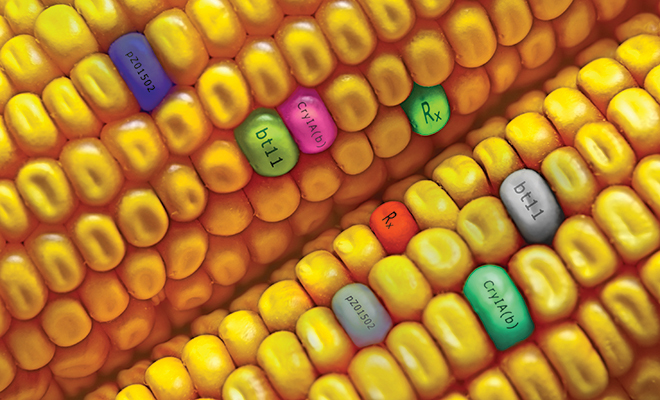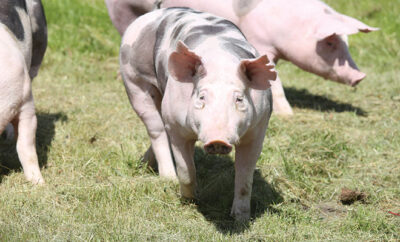
Today’s Talk about GMOs
It’s no secret that I live to eat! I love working with food, whether it involves gardening, reading recipes, cooking or eating. Along the way I’ve come to value food at its peak of flavor, food that is fresh and in season.
can’t wait for farmers’ markets to open every year. I’ve gotten to know local farmers and how they grow food and livestock. Over time, I’ve come to prefer organic food, because it has more flavor and micronutrients than its corporately farmed cousins.
But any discussion about farmers’ markets, CSAs and organic food seems to lead to another topic: GMO foods (genetically modified organisms) versus non-GMO foods. I would just as soon buy non-GMO food, if given a choice. Can’t we let the open market give us that choice? And why is there such high emotion about using biotechnology to improve food production?
There are two schools of thought about GMOs, with little common ground between them. They are allowed under U.S. food regulations because there is no evidence that they are harmful. In many other countries, GMOs are severely restricted, because there are no long-term studies that prove they are not harmful.
Let’s look at the benefits created by GMOs. The National Academy of Sciences issued a report last year affirming that GMO crops are just as safe as non-GMO crops. This report was the culmination of two years of review of research, literature and public meetings, and it confirms that, from a scientific standpoint, there appears to be no substantial difference between GMO and non-GMO produce. Specifically, it found no links between GMO foods and food allergies, obesity or Type II diabetes. In fact, most GMO crops are not destined for your grocery store shelves; the most common GMO crops are soybeans and corn, which are often used for alternative fuel and animal feed, and cotton, followed by sugar beets and canola.
The positive aspect of GMOs is that they can be genetically double-barreled to deter insect pests as well as weeds. A GMO plant can be injected with DNA of bacteria that kill insect pests, then boosted with a gene that makes it resistant to herbicides such as Roundup®. This is ideal for farmers. It means less work in suppressing insect pests and field weeds, saving countless hours of labor. Their crops are resistant to most pests and resistant to herbicides. Crops can be kept nearly weed free by applying the appropriate herbicides at appropriate times.
But this double-barreled approach brings another group into the discussion, one that is also passionate about its plight: beekeepers. Why beekeepers? Well, they’re trying to identify and solve a major problem. There is evidence that colonies of bees are dying in large numbers, but no single cause has been identified.
In 2015 and 2016, beekeepers in the United States lost about 44 percent of their honey bee colonies. Beekeepers worldwide are dealing with the sudden loss of bees, which is referred to as colony collapse disorder, or CCD. One theory about why this happens is that bees may be suffering from compromised immune systems, leaving them vulnerable to parasitic infections. The buzz in the industry is that when bees forage on GMO plants, the genetically modified flower pollen could have a negative effect on nutrition, compromising bees as they hibernate and overwinter. Climate change may also contribute to the problem, because changes in pollination due to warmer weather can lead to malnutrition for bees if food is unavailable when they need it most. And with farm acreage dedicated to single crops increasing over time, the landscape may contain only corn or soybeans for many miles. There is no longer a diversity of plants. Fields no longer alternate crops such as oats, melons, tomatoes and vegetables. This loss of habitat and food diversity could be yet another factor that affects the lifespan of bees.
Let’s visit another beneficial use of biotechnology: golden rice. This rice seed is genetically biofortified to produce Vitamin A. People in developing nations often have diets deficient in Vitamin A, which can lead to death and blindness in children, among other serious health issues. Yet anti-GMO activists have protested against GMOs by burning fields of golden rice. At the same time, farmers in developing nations have concerns of their own. They want the freedom to keep their heritage seeds and to maintain crop diversity. They are also suspicious of the impact that foreign chemical companies might have in selling them seeds, and pesticides, to succeed in growing GMO crops. Many countries around the world are equally skeptical.
So are GMOs good for us or bad for us? For some people, the answer is clearly good; for others, it’s an emphatic bad. I plan to keep an open mind and continue to research both sides of the question. ■
Sources: foodinsight.org, gmo.geneticliteracyproject.org, Caitlin Shetterly, Modified, 2016. G. P. Putnam’s Sons, New York, New York and Jennifer Thomson, Seeds for the Future, 2007, Cornell University Press, Ithaca, New York.







